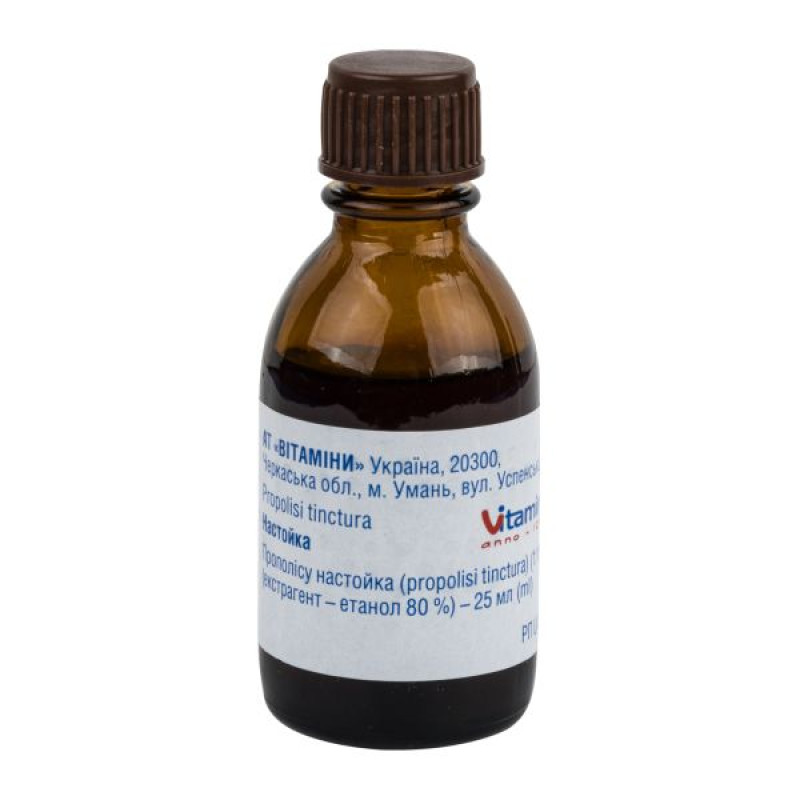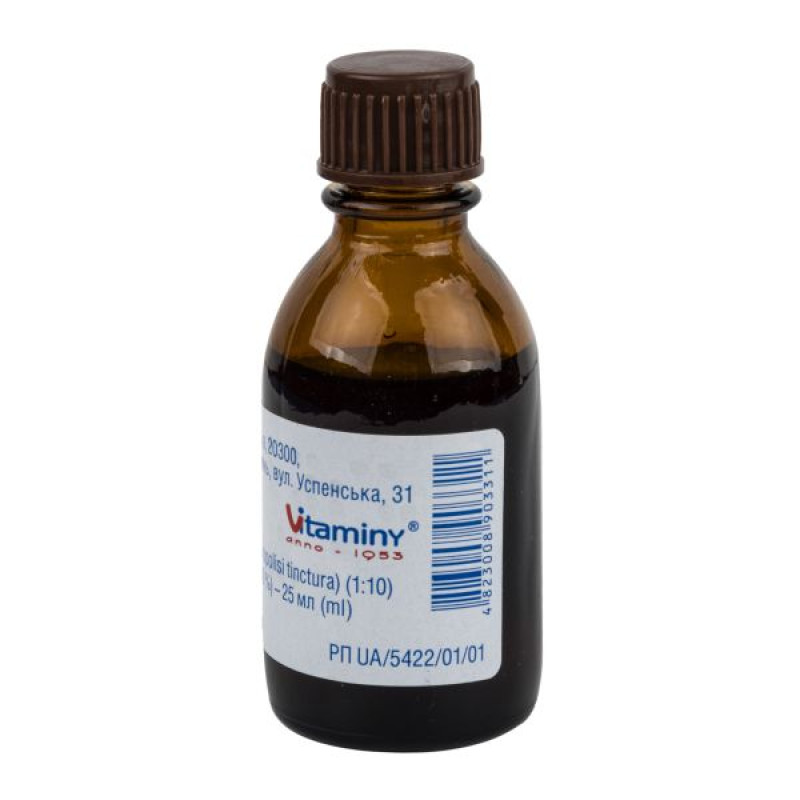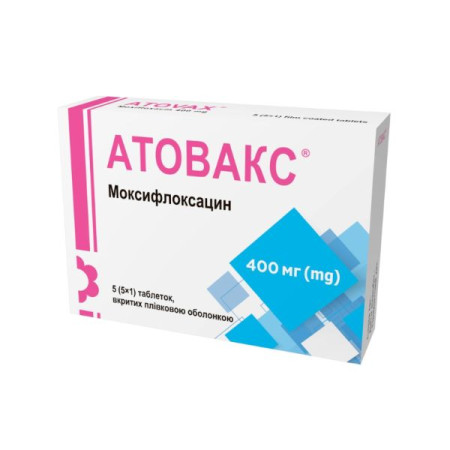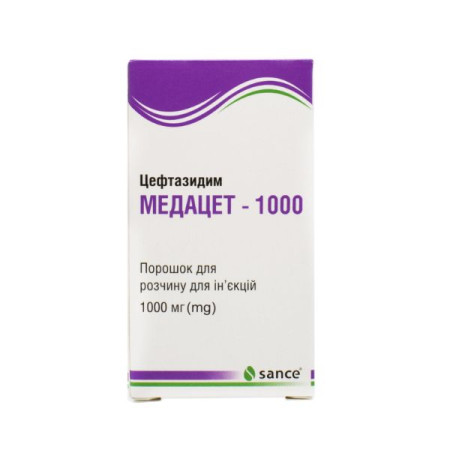Propolis tincture bottle 25 ml
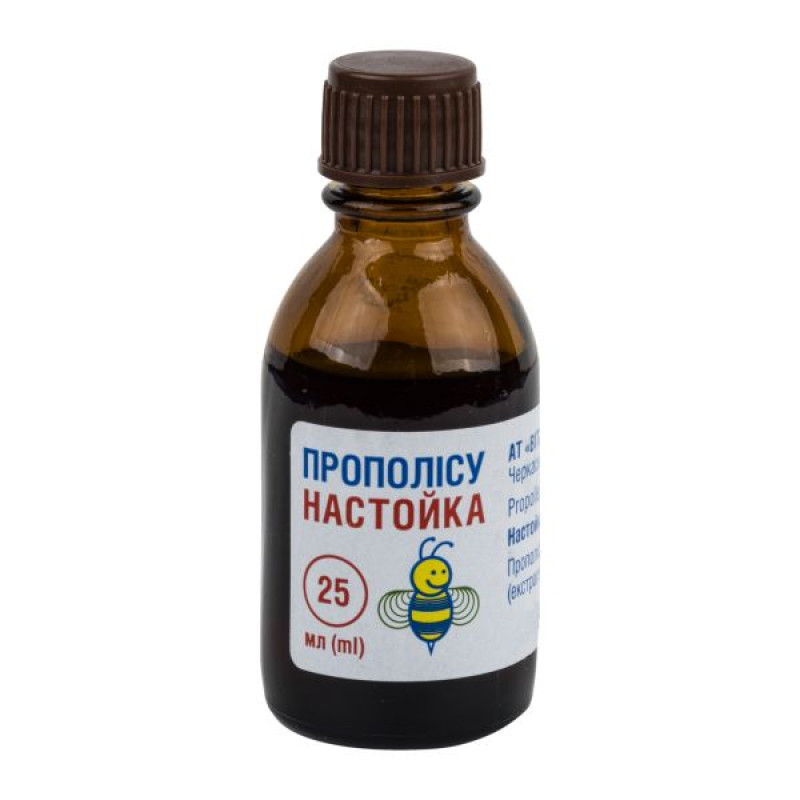
Translation of the instructions can be
PROPOLIS TINTURE tinctureInstruction
For medical use of the medicinal product
Propolis tincture
(Propolis tincture)
Composition:
Active ingredient: 1 bottle contains propolis tincture (propolisi tinctura) (1:10) (extractant - ethanol 80%) - 25 ml;
excipients: none.
Dosage form.
Tincture.
Main physicochemical properties: transparent liquid from yellow-brown to red-brown in color, with a specific odor; the presence of sediment is allowed.
Pharmacotherapeutic group.
Means for the treatment of wounds and ulcerative lesions. drugs that promote wound healing.
PBX code D03A X.
Pharmacological properties.
Pharmacodynamics.
Propolis (bee glue) is a product of bees' vital activity, which contains a number of biogenic substances: essential oils, a mixture of resins, wax, flavonoids, flavones, and cinnamic acid derivatives.
Pharmacokinetics.
It exhibits antimicrobial, anti-inflammatory activity, and accelerates regeneration processes (restoration of damaged tissues).
Clinical characteristics.
Indication.
Microtraumas and superficial injuries of the skin, mucous membranes, otitis, pharyngitis, tonsillitis, sinusitis, periodontitis.
Contraindication.
Hypersensitivity to propolis or individual intolerance, especially in people with liver and kidney diseases, eczema, allergic reactions (especially to bee products), bleeding from damaged areas of the skin and mucous membranes.
Interaction with other drugs and other types of interactions.
It is not recommended to mix with other antiseptics or beekeeping products.
Application features.
Complications are possible when using the drug, so the patient must be warned about their possibility. Symptoms of propolis intolerance may occur immediately after its use or after a few hours or even days. In some patients, they appear only during a repeated course of treatment.
Before the first use of the drug, it is necessary to conduct a tolerance test: apply the drug with a cotton swab to the skin of the forearm or the skin of the palate and observe for 30 minutes. If there is pronounced hyperemia, severe burning or blistering, the use of the drug is contraindicated. If the tolerance test is positive or intolerance occurs during use of the drug, its use should be discontinued and antihistamines should be prescribed.
Use during pregnancy or breastfeeding.
The drug is not recommended for use during pregnancy or breastfeeding.
The ability to influence the reaction speed when driving vehicles or other mechanisms.
Does not affect.
Method of administration and doses.
Propolis tincture should be used topically for adults and children from 3 years of age in the form of applications, rinses, washings, and also prescribed in the form of inhalations. For microtraumas and pustular skin diseases, apply propolis tincture with a swab to the affected area 1-3 times a day. For external purulent otitis, after cleaning the ear canal, insert a swab soaked in propolis tincture into the ear (for 1-2 minutes 2-3 times a day) or instill 1-2 drops of propolis tincture 3-4 times a day. For chronic tonsillitis and pharyngitis, lubricate the mucous membrane 1-2 times a day for 8-15 days. In addition, for tonsillitis, use propolis tincture to prepare an inhalation alcohol-water solution in a ratio of 1:20.
Carry out 1-2 inhalations per day, the course of treatment is 7-10 days. In case of chronic sinusitis, rinse the maxillary sinuses with a solution prepared from propolis tincture and 0.9% sodium chloride solution (in a ratio of 1:10) 2 times a day for 2 weeks. In case of periodontitis, introduce propolis tincture into periodontal pockets on turundas for 5 minutes. In case of superficial erosions and lesions of the oral mucosa, use a solution prepared from 15 ml of propolis tincture in ½ cup of warm water for rinsing, 4-5 times a day, for 3-4 days.
Children.
Use for children from 3 years old.
Overdose.
Symptoms: loss of appetite, decreased overall body tone, lethargy, appearance of skin rash.
Therapy: treatment with antihistamines.
Adverse reactions.
The drug in usual therapeutic doses is not toxic and is well tolerated. Adverse reactions occur rarely, and their outcome is favorable.
Possible side effects:
Skin and subcutaneous tissue: urticaria, local itching of the skin, local swelling, redness of the skin, blisters, vesicular rash, dryness and cracking of the skin, especially on the hands and other parts of the body that come into contact with the drug; Central nervous system: dizziness; Immune system: allergic reactions, including allergic dermatitis, flushing, itching of the skin, rash, laryngospasm, shortness of breath, angioedema, fever; Gastrointestinal tract: nausea; Respiratory system: shortness of breath.Local reactions are possible, including a burning sensation on the tongue and dry mouth.
Expiration date.
2 years.
Storage conditions.
In the original packaging at a temperature not exceeding 25 ºС, out of the reach of children.
Packaging.
25 ml in a bottle.
25 ml in a bottle, 1 bottle in a pack.
Vacation category.
Without a prescription.
Producer.
Pao "vitamins".
20300, Ukraine, Cherkasy region, M uman, Leninsky Iskra St., 31.
Applicant.
Pao "vitamins".
Location of the applicant and/or the applicant's representative.
20300, Ukraine, Cherkasy region, M uman, Leninsky Iskra St., 31.
There are no reviews for this product.
There are no reviews for this product, be the first to leave your review.
No questions about this product, be the first and ask your question.







